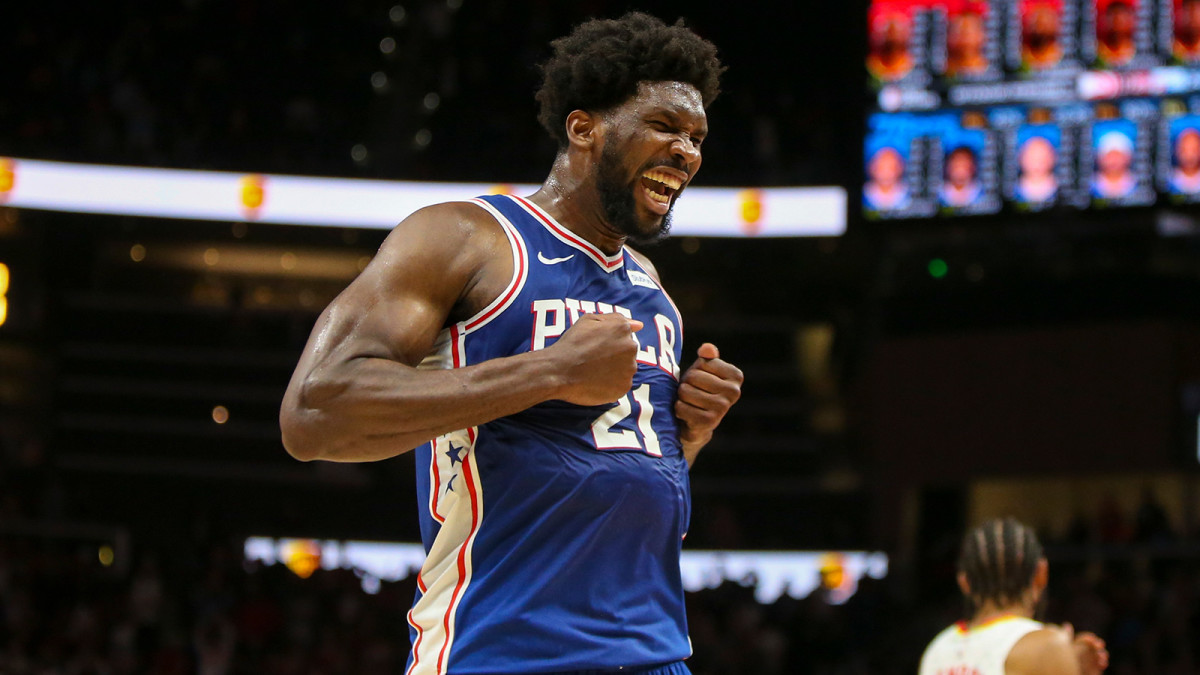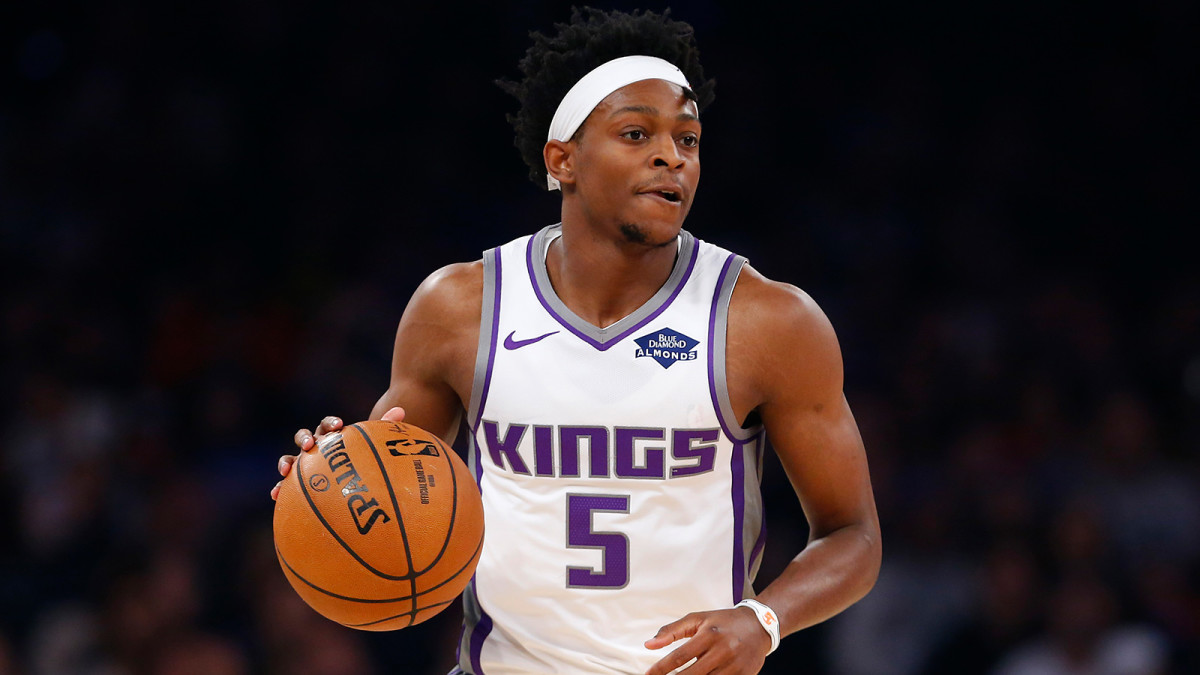Five Early NBA Season Trends to Keep an Eye On


We’re just about, kinda-sorta one-tenth through the NBA season. While the time for hard and fast conclusions is still a long ways away, there have still been some intriguing trends to start the new year. Below, I’ve isolated a few quirks that have caught my eye. Are these trends merely blips in the radar we call the NBA regular season? Will things regress to the all-powerful and all-knowing mean? Or are we actually witnessing the beginning of a new normal in some instances? Before this gets anymore philosophical, let’s dive into the numbers.
The Sixers’ New Starting Lineup Scoring Issues
Philly’s new-look starting five of Ben Simmons, Josh Richardson, Tobias Harris, Al Horford, and Joel Embiid had posted a net rating of 15.1 in 42 minutes over four games, As suspected, the group is hellacious defensively. Opponents have an 88.2 offensive rating against this fivesome, which is basically a “Bad Boys Pistons on acid” level of defense. The worry is the offensive rating of 103.3, a mark worse than last year’s worst offensive team (the Knicks.) If Philly can figure things out on that end of the floor without compromising its defense, it will become nearly impossible to beat. But it’s unclear where the solutions will come from. The Sixers’ new starting five plays slower than last year’s group, which was already playing slower than it should for a team that has Simmons as its point guard. There are spacing issues, and the Horford-Embiid pairing can be especially clunky offensively.
Maybe the offense really ends up never mattering for Philly because it can shut everyone down, and Brett Brown will always have the option of breaking this group up come playoff time. But Harris, Horford, Simmons, and Embiid are all signed long-term, so it would be nice to see a little more cohesion out of that group. For comparison’s sake, last year’s starting five that included Jimmy Butler and J.J. Redick in place of Richardson and Horford posted a 19.4 net rating—with both an elite offense and stingy defense.
Russell Westbrook’s Solo Minutes
A lot of the numbers/trends in this piece are changing rapidly because of the small sample size, and perhaps no team in the first tenth of the season has been more volatile than the Rockets. But Houston has played only one contender (a loss to the Bucks when Giannis fouled out for the last few minutes) and otherwise hasn’t exactly impressed against a light schedule. Even if we want to wait and see on the James Harden-Russell Westbrook pairing (currently posting a meager but positive 5.4 net rating together), Russ’s solo minutes are absolutely worth keeping an eye on. Entering Friday, in 78 minutes with Westbrook playing and Harden on the bench, the Rockets have posted a pitiful minus-15.1 net rating, and that’s worrisome for a couple reasons.
That number follows a trend for Westbrook from last season. The Thunder were basically an average team whenever Paul George sat on the bench, and as the only star, Westbrook couldn’t really elevate the roster by himself. Westbrook’s solo minutes also compare wildly unfavorably to Chris Paul. Last year’s Rockets performed really well when Paul led the show while Harden sat, a key to their second-half resurgence. Maybe this year’s Houston team can pull off a similar turnaround, but Harden and Russ still haven’t been tested by their best competition. While Westbrook has been a more willing cutter than ever before and has helped push the pace, his lack of shooting and unique style of play hasn’t been a seamless fit. It’s absolutely still early for the Rockets, but it’s concerning how much worse Russ has been than CP3 in his alone time.

The Kings’ Pace
Sacramento is off to a slow start, literally and figuratively. Last year’s Kings—one of the league’s surprise teams—finished third in pace. This season, through eight games, Sacramento is 2–6 and has the fifth-slowest pace in the league. This is a pretty shocking development, considering how fast Luke Walton’s Lakers teams played, and that De’Aaron Fox is the kind of point guard who loves to push the ball. Marvin Bagley having played in only one game is hurting this team on a macro level, and vets like Cory Joseph and Trevor Ariza are still working themselves into the situation. We’ll probably have to do a full deep dive on Sacramento’s issues at some point, but the Kings trying to get out and run a bit more could help them break up at least some of their early season struggles.
Malcolm Brogdon and Gordon Hayward
Brogdon is averaging 22.3 points, 5.0 rebounds, and 9.9 assists per game. Hayward is averaging 20.3 points, 7.9 rebounds, and 4.6 assists per game. Both of these players will have All-Star cases if this stretch proves to be anything more than a blip. That would be fascinating on several levels.
Would the Celtics feel like a contender again with an All-Star Hayward? Or would they maybe consider moving him in an option year, striking while the iron is hot and adding depth around their young core?
Would a Brogdon-Victor Oladipo backcourt be enough to put the Pacers’ in the top three of the East? What does Brogdon’s success do to the Bucks, who basically kept Eric Bledsoe for the long term instead? Does his success elsewhere (and the fact that his departure was largely money related) have any lingering effect on Giannis, especially considering Bledsoe’s playoff struggles? Okay, that last question felt particularly galaxy brain, but Brogdon and Hayward continuing to excel would make the East a lot more interesting.
Mike Conley’s Catch-and-Shoot Percentage
Something the Jazz probably didn’t expect when replacing Ricky Rubio with Mike Conley this summer is Rubio actually shooting better on catch-and-shoot threes than Conley. File this stat under something that has to change as the sample size increases: Entering Friday, Rubio was shooting 1.4% better than Conley on catch-and-shoot threes, also attempting 0.6 more per game. Utah didn’t bring Conley in from Memphis to stand in a corner and shoot. He’s on the Jazz to help ease the ball-handling burden from Donovan Mitchell, and also provide offense through pick-and-rolls. But an easy way for Conley to break out of his slow starts will be to make his open shots. Conley has never been a huge spot up guy, mostly because he was always needed on the ball in Memphis. But he shot nearly 40% on catch-and-shoot threes last season. Once he starts capitalizing on the looks Mitchell creates for him with the Jazz, his slump will start to look much less severe, even if he still needs time to get the other aspects of his game going.
